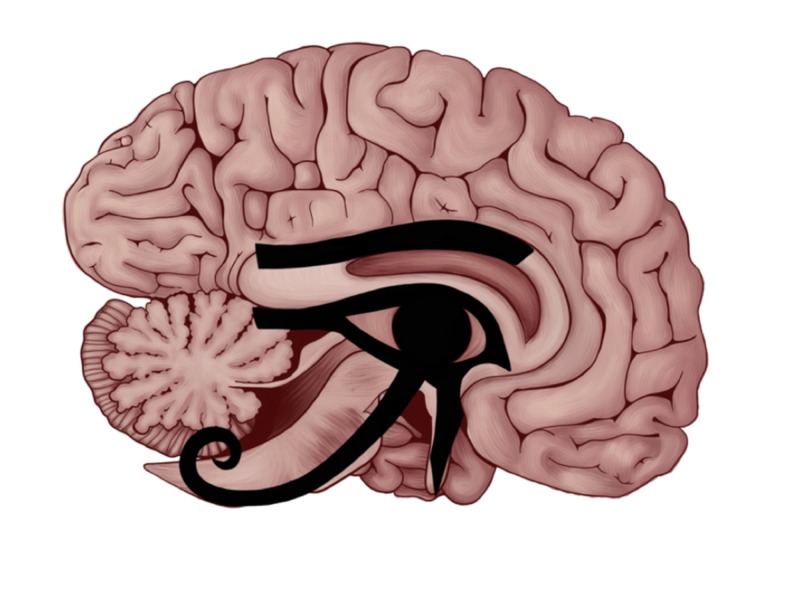The Eye of Horus
After doing research on the eye of Horus, it is tempting to think that ancient Egyptians integrated the knowledge of anatomy, mathematics and mythology into their artwork. In the mythology of ancient Egypt, the eye of Horus is the allusion to prosperity and protection [1]. In terms of anatomy, mid-sagittal section of the human brain discovered in the modern neuroanatomy is incredibly similar to the eye of Horus. Surprisingly, if we superimpose the eye of Horus over the image of human brain, the right triangular-shaped part of the eye of Horus can fit the shape of the olfactory trigone representing the sense of smell in our brain whilst the sense of hearing is represented by the left triangular-shaped part of the eye; the eyeball resembles the shape and location of massa intermedia representing vision, the eyebrow can overlap the area of the corpus callosum for wisdom and thoughts; the tail of the eye showing the taste pathway in the human brain; and the muscle position sense is illustrated by the straight object coming down from the right side of the eye [1].
The Eye of Horus fitted in the mid-sagittal section of the human brain [1]
In addition, each fragment of the eye of Horus can be associated with unit fractions whose denominators are all numbers to the powers of two and which were widely utilized in ancient Egyptian mathematics. Interestingly enough, those fractions, 1/2, 1/4, 1/8, 1/16, 1/32, 1/64, might be the representations of six senses that are mentioned above[1]. Although we might overinterpret the eye of Horus, I believe that the process of discovering the mathematical idea hiding behind the ancient masterpiece is meaningful and can be a good hook to stimulate students' interests in mathematics.



Sijie, I agree that it can be fun and engaging for students to bring multiple interpretations of the Eye of Horus that have developed over many years into the classroom. I am curious about your own connections to significant numbers.
ReplyDelete